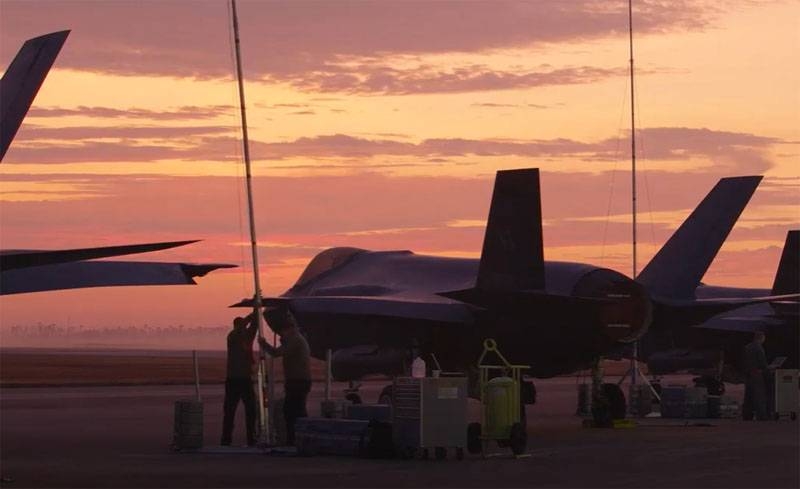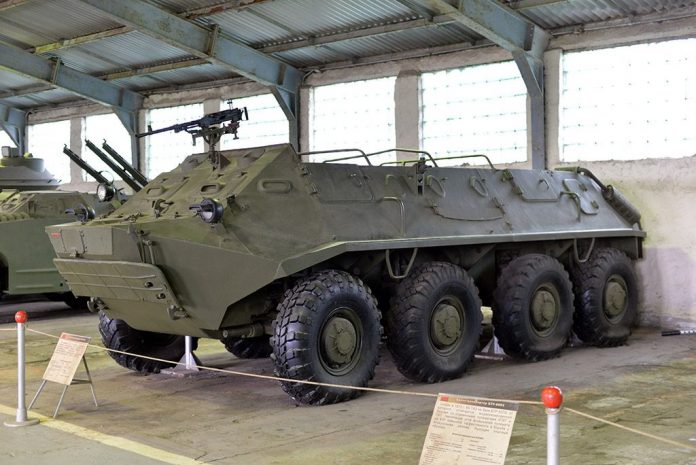 Armored personnel carrier BTR-60P
Armored personnel carrier BTR-60P
BTR-60 opened a new page in the creation of wheeled armored personnel carriers, becoming the world's first production four-axis combat vehicle in its class. designed in 1956-1959 BTR-60P became the progenitor of numerous military vehicles, built on its base, as well as further modifications of the BTR-70 and BTR-80, which still remain in service with the Russian army and police. Altogether during the serial production 1960 by 1987 year at various plants was collected order 25 thousand BTR-60 of all modifications.
The history of the BTR-60
In the 1950s, the main armored personnel carrier, armed with the Soviet Army, was triaxial BTR-152, developed by engineers of the ZIS plant based on the chassis of an all-terrain truck ZIS-151. The machine was highly reliable, but the military had a claim to her. This armored personnel carrier could not overcome wide trenches and ditches, and also characterized by insufficient cross, his ability to interact with tanks on rough terrain was limited.
One of the attempts to solve the problem was the work on improving the BTR-152, which was supposed to get a new chassis with a uniform arrangement of bridges, what was considered an effective way to improve cross. Such an APC was really created. Test machine tests, known as BTR-E152B, took place at the beginning 1957 of the year. The car really showed a tangible increase in patency, but a new controllability problem surfaced.
In parallel in 1956 at the Gorky Automobile Plant began work on the creation of a new armored personnel carrier. The car received a working designation BTRP - an armored vehicle floating. Creating a new model of wheeled armored vehicles, the developers expected to provide the car with a high cross, as well as average speed, which would allow cross-country movement along with tanks, using the tank lined track.
Based on these requirements, formed and the appearance of the new armored personnel carrier, which was supposed to have high ground clearance, tank gauge, high power density. It was planned to create an armored personnel carrier with such clearance, so that the contact of the bottom of the machine with the ground is short-term and does not interfere with movement on the ground. At the same time, the designers expected to give the new BTR good amphibious properties.: stability, speed, unsinkable and manageable in water.
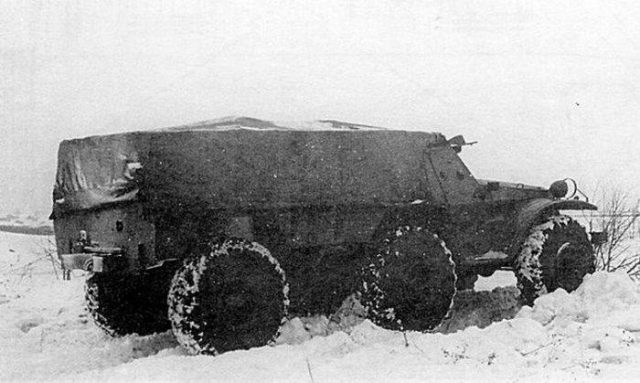 Experimental BTR-E152V
Experimental BTR-E152V
The first prototype of a new combat vehicle, created by the specialists of the design bureau of the GAZ plant, received the designation GAZ-49 and was ready for the middle 1958 of the year. Direct work on the new machine was headed by Vladimir Alekseevich Dedkov, who had previously established himself as the creator of a whole line of Soviet armored vehicles: BTR-40, BRDM-1 and BRDM-2.
Created in Gorky (today Nizhny Novgorod) the armored personnel carrier met all the requirements of the military. The BTR was built on a completely original wheelbase with four bridges equally spaced along the base. At the same time, the designers turned to the layout unconventional for the BTR. In front was the management compartment, followed by the landing squad, and in the stern was located the engine compartment.
From the first production models of the future BTR-60, the prototype was distinguished by the installation of one GAZ-40P gasoline engine with a maximum power of only 90 HP. It was obvious, that engine power is clearly not enough for a vehicle with a combat weight 10 tonnes. However, an attempt to replace the GAZ-40P carburetor engine with the YAZ-206B diesel engine, giving out 205 hp, proved unsuccessful - such a power plant came out too heavy, and the APC received a significant advantage in the stern.
Since there were simply no other suitable domestic engines at the disposal of designers, the way out of this situation was the installation of a twin of two GAZ-40P gasoline engines with their own transmissions. Each of the engines worked on two axles of a combat vehicle. Both engines placed on a single frame, but the motors themselves were not blocked, but only their control drives.
A modified model of an armored personnel carrier with two GAZ-40P carburetor engines was completely ready by autumn 1959 of the year. It is worth noting here, that at the same time other armored personnel carriers were being developed in the Soviet Union, projects proposed by ZIL, Altai Tractor Plant, Mytishchi Engineering Plant, as well as SKB Kutaisi Automobile Plant.
Of the variety of projects, the military chose GAZ-49, the model was considered the cheapest, plain, reliable and technological in production. BTR could easily be mass-produced in large quantities. curious, what the military liked and the solution with a power plant, which the internal commission of the Minavtoprom openly called "illiterate" and "adventurous". The military in the engine spark was pleased with the fact, that when one of the engines fails, the armored personnel carrier retained the ability to move on the highway at a speed of 60 kmh.
As a result, it was the GAZ-49 that was adopted by the Soviet Army. The corresponding order of the Ministry of Defense was signed 13 November 1959 of the year. The new combat vehicle was adopted under the designation BTR-60P, where the letter "P" meant "floating".
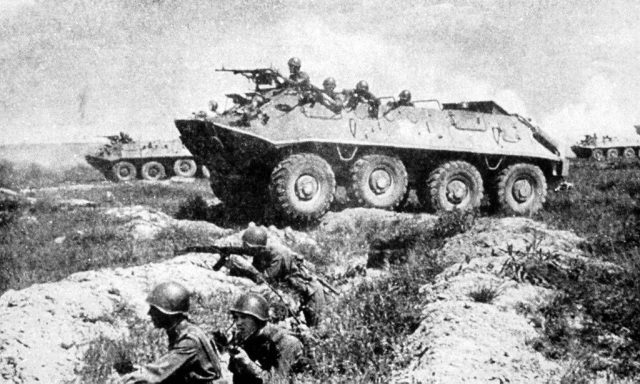 BTR-60P
BTR-60P
Technical features of BTR-60P
The armored personnel carrier created on the original base became the world's first production armored personnel carrier on a four-axle chassis with an 8x8 wheel arrangement (all wheel drive). A feature of the new Soviet combat vehicle was an uncharacteristic for an armored personnel carrier layout with a front-mounted control compartment, medium - airborne squad, in which depending on the modification could freely accommodate from 8 to 14 human, and aft MTO.
When overcoming small water obstacles on the armor, an armored personnel carrier could transport even before 10 fighters, enough buoyancy. In all versions, the crew of the combat vehicle consisted of two people - the driver and the commander.
The power plant BTR-60P was a pair of six-cylinder carburetor engines GAZ-40P, giving out total power 180 HP. The engines allowed the mechanical drive to disperse the APC with a combat mass 10 tons to 80 km / h on the highway, afloat - to 10 kmh. The engines were powered by B-70 gasoline, which was poured into two tanks with a total capacity 290 liters. There was enough fuel, to overcome on the highway to 500 km. The new chassis provided the machine with easy overcoming trenches and ditches up to a width of 2 m.
The body of the BTR-60P was welded from armored plates with a thickness of 5 to 9 mm, he provided the car with a very conditional bulletproof reservation, even though, that many body armor plates were located at good angles of inclination to the vertical. The body was a bearing, its lower part was streamlined, and the bottom was flat. On the BTR-60P model, the case was open at the top, on the march, to protect the crew and the landing from the weather, a tarpaulin tent could be pulled, which was included in the laying of an armored personnel carrier.
The landing was placed on wooden cross benches, to facilitate leaving the combat vehicle in the upper parts of the side were located folding doors. On the BTR-60PA version, two special rectangular manhole covers appeared in the roof, and on the BTR-60PB two side hatches were added to them.
This landing option had obvious flaws.. The soldiers had to leave the car through the sides, being at a height of two meters under enemy fire, on BTR-60PA, the situation worsened even more, since there were only two hatches. At the same time, wounded soldiers get out of the APC and before that it was very difficult, and with a roof over your head the situation in this regard only worsened. At BTR-60PB, the problem was solved by placing side hatches, but only partially.
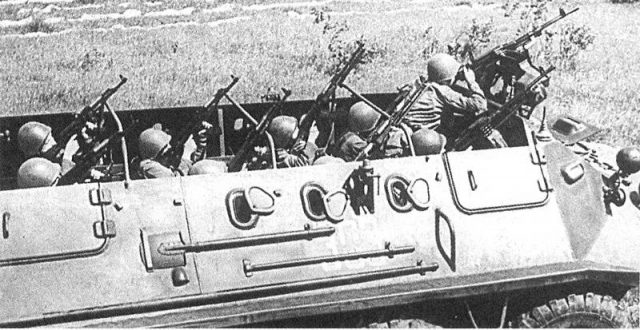 Soldiers firing at an aerial target from BTR-60P
Soldiers firing at an aerial target from BTR-60P
The main armament of armored personnel carriers of the BTR-60P and BTR-60PA models was the 7.62-mm machine gun of the CBSS. The BTR-60P version had three swivel brackets, designed for machine gun installation: frontal (this is the main mounting option), the two side (on port and starboard). Gun ammunition consisted of 1250 rounds. Specifically, to increase the accuracy of fire, a shoulder rest was introduced in the design of the CBSS.
Paratroopers could also fire at the enemy over the sides of the hull with personal weapons. Also, the RPG-7 grenade launcher was included in the APC laying, one AK-47 assault rifle, 9 hand grenades F-1, as well as a signal gun.
Three main modifications of the BTR-60
BTR-60 was mass-produced in the USSR with 1960 by 1987 year. FROM 1960 by 1976 year the assembly was carried out in Gorky at the native plant, and with 1976 years, armored personnel carriers were produced only in Kurgan at the facilities of KZKT - Kurgan Wheel Tractor Plant (the transfer of part of the production to KZKT began already in 1967 year). Also, the mass production of the licensed version of the armored personnel carrier under the designation TAB-71 was carried out in Romania.
The first version of the combat vehicle, received the designation BTR-60P, produced in Gorky with 1960 by 1963 year. During this time, GAZ workers collected 2626 machines. The main difference between these armored personnel carriers was the airborne compartment opened on top, in which they could freely accommodate 14 motorized rifle.
The following modification entered the scene fairly quickly BTR-60PA, the main difference of which was the presence of a roof over the airborne compartment and a fully enclosed hull. This version has been mass-produced at the GAZ plant since June 1963 year on 1966 year, During this time, they left the assembly line 2348 BTR-60PA. At the same time, to maintain the combat mass of the armored personnel carrier at the same level, the number of troops dropped to 12 human.
The military switched to the option with an armored roof under the influence of military events in Hungary in 1956 year, already then it was decided to release part of the armored personnel carrier with a closed landing squad. But the main reason was the reorientation of ground forces in the early 1960s to the possibility of action in the conditions of the use of tactical nuclear weapons by the enemy. In the context of the use of weapons of mass destruction, shooter actions, located in an open enclosure, recognized as impossible.
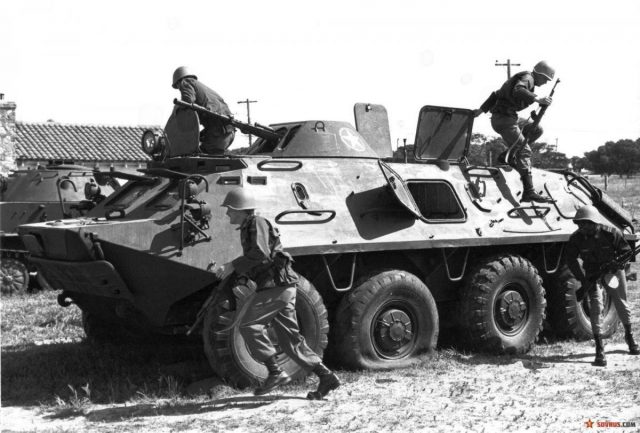 BTR-60PB
BTR-60PB
The most massive, recognizable and surviving version is BTR-60PB, which, in addition to a fully enclosed building, was distinguished by the presence of an armored turret with powerful machine-gun weapons. The combat vehicle was created on the basis of the BTR-60PA in the period from 1962 by 1964 year and was released until the completion of mass production, being the most successful representative of the series.
BTR-60PB not only could transport the infantry squad, but also provide him with powerful fire support in battle. At the same time, the number of paratroopers transported has once again decreased, this time to 8 human, one of them served as a shooter. Thanks to the presence of a completely sealed enclosure and the installation of a special filter-ventilation unit, reliable protection of the crew and the landing against the damaging factors of WMD was provided.
BTR-60PB was distinguished from earlier models by improved protection (the forehead of the hull held an armor-piercing 7.62 mm B-32 bullet), the presence of a tower installation and more powerful weapons. The tower, which was similar to that, what was put on the BRDM-2, a large 14.5 mm KPVT machine gun was installed, coaxial with a 7.62 mm PC machine gun.
The presence of a 14.5 mm machine gun allowed the armored personnel carrier to fire at targets at a distance of 2000 m. At this distance, the 14.5 mm cartridge left no chance for unarmored vehicles and some lightly armored vehicles, and also ensured the defeat of enemy soldiers and officers in any personal protective equipment, including those behind light shelters.
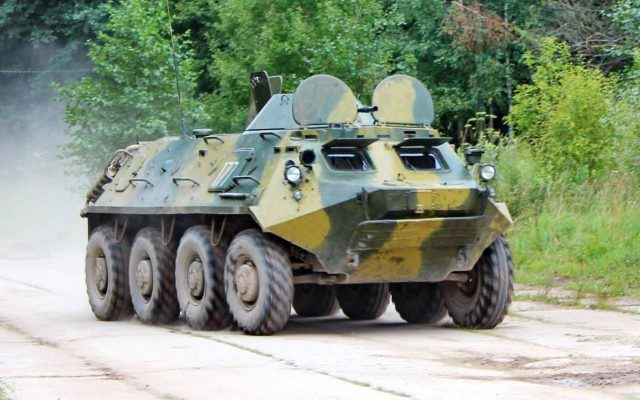 BTR-60PB nowadays
BTR-60PB nowadays
The wheeled armored personnel carrier developed in Gorky was to first complement, and in the future and replace all Soviet first-generation armored personnel carriers, created in our country in the postwar years. The BTR-60 did a good job of this.. Unlike all its predecessors, the “Sixtieth” received a new original chassis with an 8x8 wheel arrangement.
The four-axle car was characterized by high cross-country ability and dynamic qualities, good ride and quickly became very massive. Following the tanks, BTR could easily overcome trenches, rows of trenches, various ditches, as well as water barriers.
BTR-60 was actively exported, having time to take part in the Arab-Israeli wars, Iran-Iraq war and other conflicts of the second half of the XX century. In dozens of countries, these armored personnel carriers are still in service as armies, and police units.
/Sergey Yuferev, topwar.ru/







